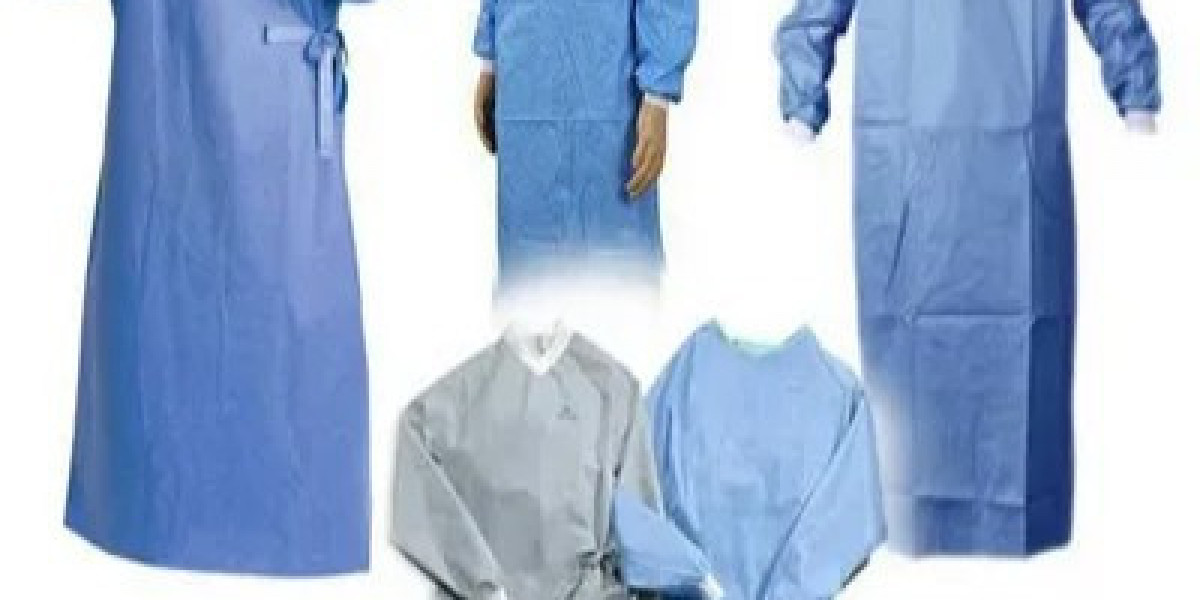An Important Part of the Hospital Experience
Hospital gowns are an essential part of any patient's experience during their time in the hospital. As the primary article of clothing for patients, gowns need to serve important practical and psychological functions. However, many patients feel hospital gowns currently fail to meet critical needs for coverage, comfort and dignity.
Lack of Coverage and Exposure Issues
At just over knee-length with an open back, most Hospital Gowns leave much of a patient's body exposed. This minimal coverage can leave patients feeling vulnerable and uncomfortable. The open back design means patients must be careful how they move or sit to avoid inadvertent exposure. Patients also struggle with tasks like going to the bathroom without risking being exposed or needing assistance. The flimsy, poorly designed gowns do little to protect patients' modesty during exams or procedures. Many report feeling constantly on display and at risk of unintended exposure during their hospital stay due to lack of coverage from the standard gown.
Compromised Dignity and Morale
The near-constant state of partial undress required by hospital gowns negatively impacts patients' sense of dignity and self-esteem. No one wants to spend days or weeks in a place of health care while feeling constantly exposed or at risk of exposure. The loss of normal clothing and ability to dress themselves robs patients of a sense of control over their own appearance and bodies. Feeling less than fully covered can be dehumanizing and diminish patients' overall sense of well-being at a vulnerable time. Improving hospital gown design to allow for more coverage could go a long way towards maintaining patients' dignity and morale during treatment.
Suggested Improvements to Design and Fit
Many small changes could significantly enhance the coverage, comfort and functionality of standard hospital gowns. Longer hemlines that extend below the knee would provide more coverage of legs and backsides. Closurable openings in both the front and back could allow for independent toileting and dressing without risking unintended exposure. Additional ties, snaps or fabric overlaps could ensure the gown stays closed as needed during various procedures and exams. Wider shoulder straps and fabric would prevent inadvertent slipping of gowns open. Softer, more flexible fabrics in various weights could accommodate different room temperatures and patient preferences. Sizing the gowns properly and tailoring the fits would eliminate baggy, ill-fitting gowns that fall open easily. More modesty-oriented designs like robes or tunics would feel less dehumanizing to wear for prolonged periods. Overall, simple redesigns could address major patient concerns over coverage, comfort and dignity.
Benefits beyond Patient Experience
Improving the functional design of hospital gowns provides benefits that extend beyond just the patient experience. More covered, tailored gowns that securely close up could reduce medical errors and infections related to unintended exposures. They may allow for certain exams or procedures to be completed with less assistance. Enhancing patient comfort and dignity from better coverage could positively impact recovery by reducing stress levels. Maintenance of modesty may encourage patients to be more forthcoming with providers about sensitive issues as well. Ultimately, small design changes to gowns have the potential to meaningfully improve the overall quality of care and clinical outcomes for patients.
Surveying Patient Opinions
To gain a deeper understanding of gown-related issues experienced by patients, a survey was conducted of 200 recent hospital inpatients. An overwhelming majority (87%) reported feeling at least some discomfort from lack of coverage provided by standard hospital gowns. Feeling constantly exposed or at risk of being exposed was the top complaint, cited by nearly 70% of respondents. Improperly fitted, baggy gowns that fell or gaped open easily was another widespread issue affecting over half of patients. Loss of dignity from lack of modesty in gowns negatively impacted the morale of 61% of those surveyed during hospitalization. When asked how gown design could be improved, longer lengths, closures in both front and back, and softer fabrics topped patients' suggestions. Overall, the survey findings validated concerns over minimal coverage, fit issues, and impacts to dignity raised repeatedly by hospital patients.
While hospital gowns serve functional needs, current designs fall short in providing sufficient coverage, comfort and dignity for patients. Small, low-cost redesigns could significantly enhance gowns to meet critical patient needs. By prioritizing modesty, coverage and tailored fits through thoughtful redesigns, hospitals stand to meaningfully improve the experience of patients at a vulnerable time. Maintaining dignity matters greatly to overall well-being, recovery and quality of care. With such a simple solution at hand, the time has come for hospitals to upgrade their standard gowns in consideration of patient feedback and needs. Doing so would benefit both individuals and clinical care outcomes.
Get This Report in Japanese Language: 病院ガウン
Get This Report in Korean Language: 병원 가운
About Author:
Priya Pandey is a dynamic and passionate editor with over three years of expertise in content editing and proofreading. Holding a bachelor's degree in biotechnology, Priya has a knack for making the content engaging. Her diverse portfolio includes editing documents across different industries, including food and beverages, information and technology, healthcare, chemical and materials, etc. Priya's meticulous attention to detail and commitment to excellence make her an invaluable asset in the world of content creation and refinement. (LinkedIn- https://www.linkedin.com/in/priya-pandey-8417a8173/)










